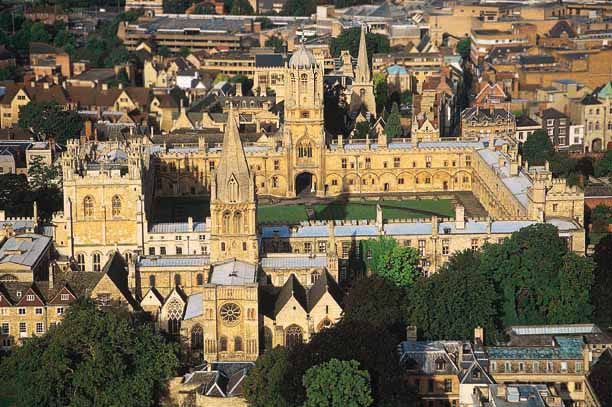 Oxford University was founded as an aristocratic one and it retains its aristocratic character to the present day: the cost of studies is high. Students have to pay for using libraries and laboratories, as well as for taking examinations. Oxford University was founded as an aristocratic one and it retains its aristocratic character to the present day: the cost of studies is high. Students have to pay for using libraries and laboratories, as well as for taking examinations.
Oxford's organization is very complicated. In fact, the University is a collection of 35 Colleges: two for women only, the rest taking both men and women. Each college has its name, its coat of arms. Each college is governed by a Master. Each college gives its students a specialized training in arts, law, medicine and science. Within the college one will normally find a chapel, a dining hall, a library, rooms for undergraduates, fellows and the Master, and also rooms for teaching purposes.
The largest college has over 500 students; the smallest college has 100 students.
The University is an administrative centre which arranges lectures for all students of the colleges, holds examinations and gives degrees.
The tutorial system of education (used both in Oxford and Cambridge) is one of the ways in which these two oldest Universities differ from other English Universities. Every student has a tutor who plans his work. Each week students come to see their tutor and he discusses with them the work which they have done.
The academic year in England has three terms; each term lasts from eight to ten weeks. Terminal examinations take place at the end of autumn, spring and summer terms. Final examinations take place at the end of the course of studies. If a student fails in an examination, he may be allowed to take the exam again, but only two re-examinations are usually allowed.
Keeping to the customs of the past all the students of Oxford University wear long black gowns and students' caps.
 |